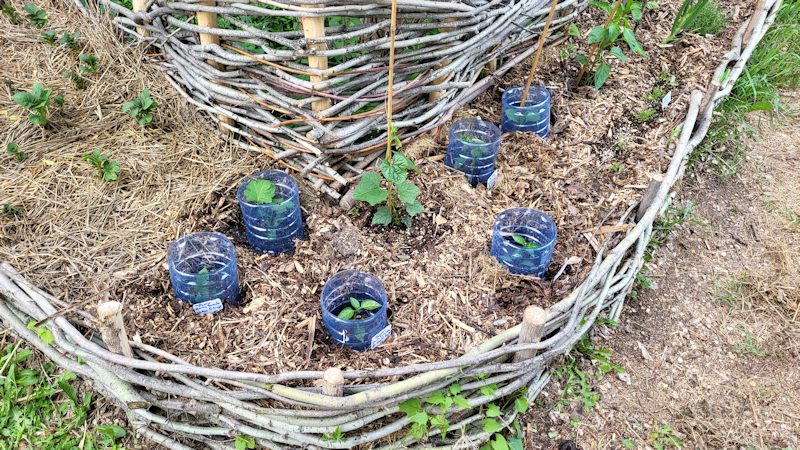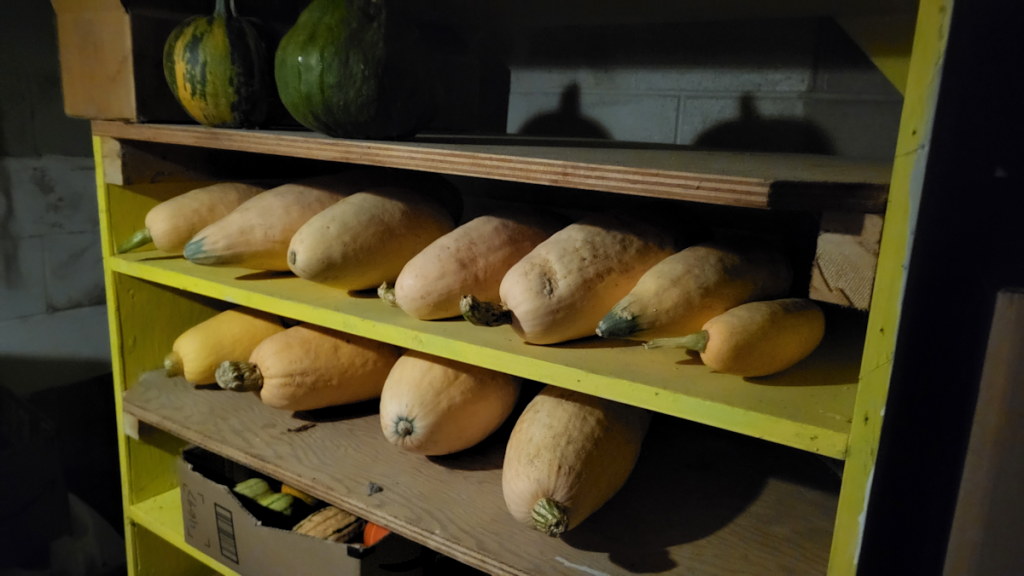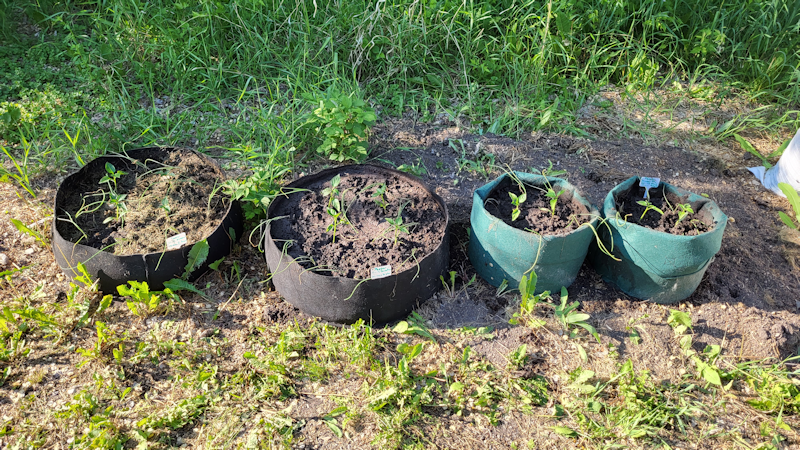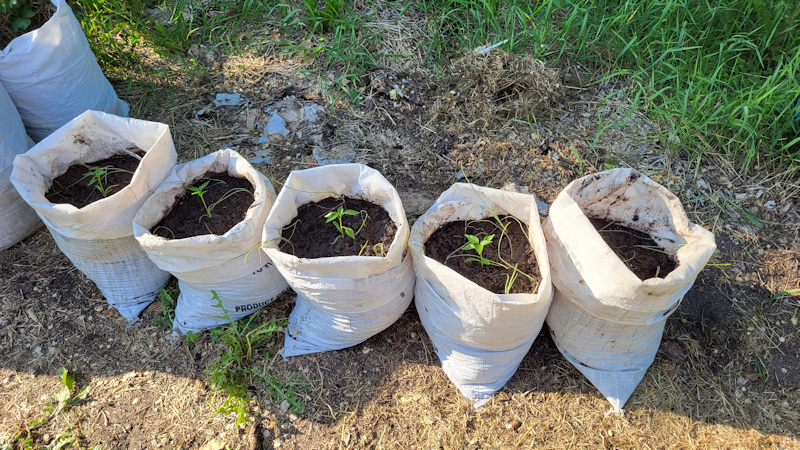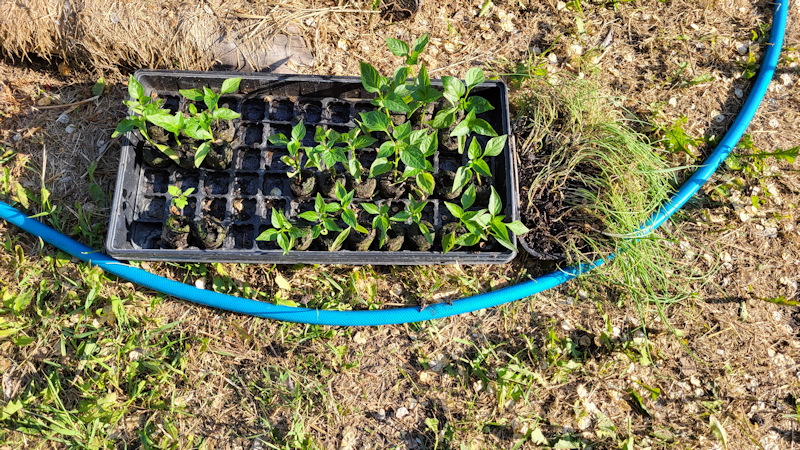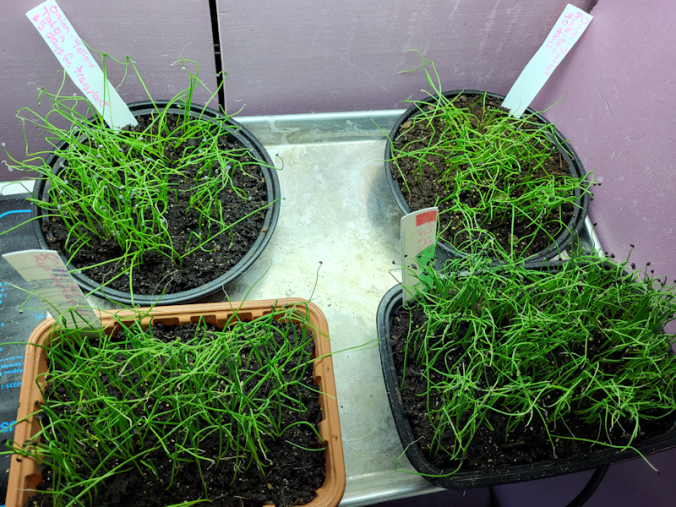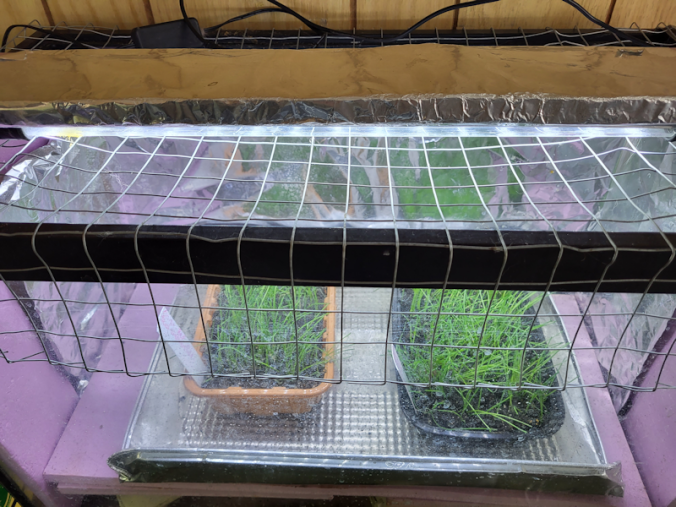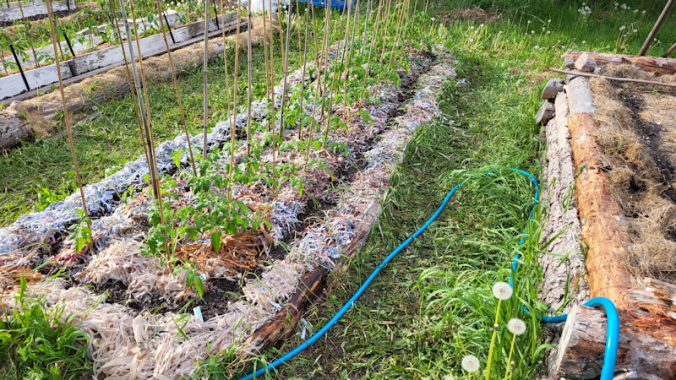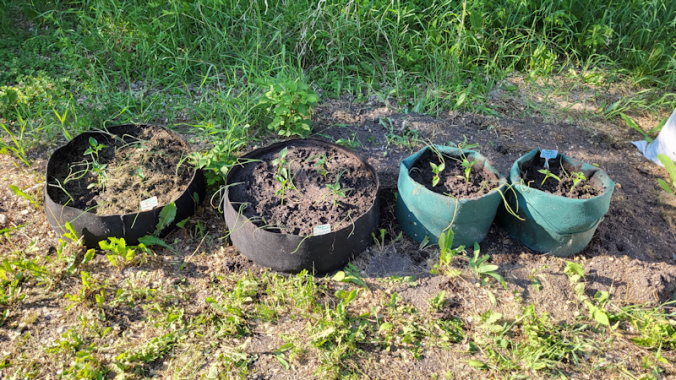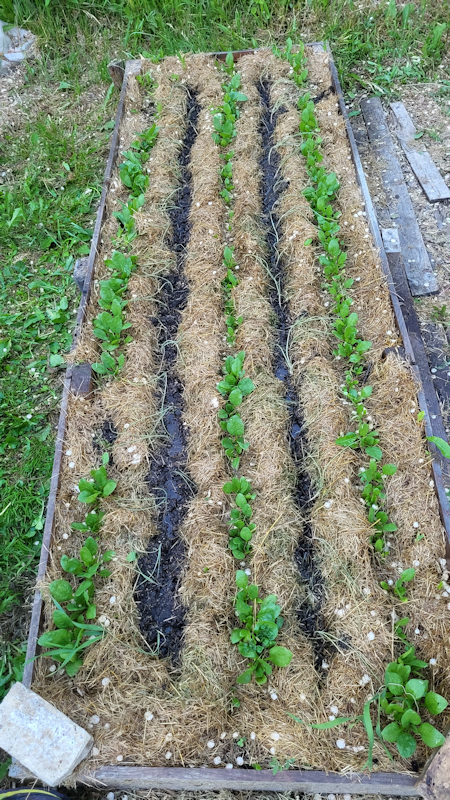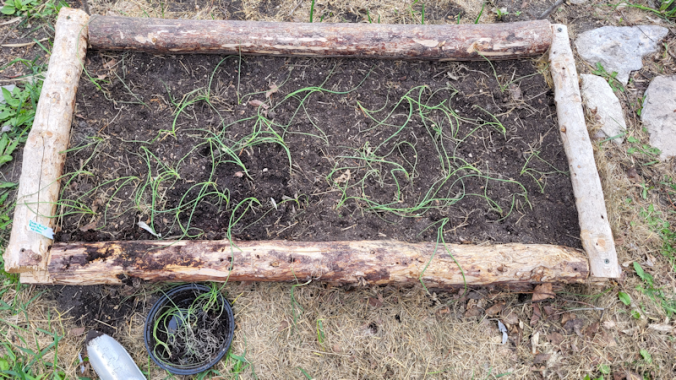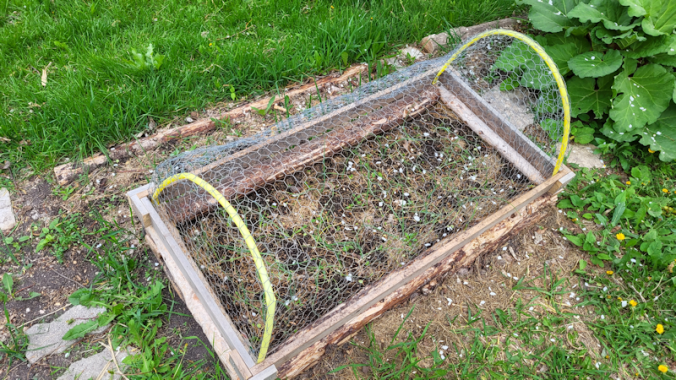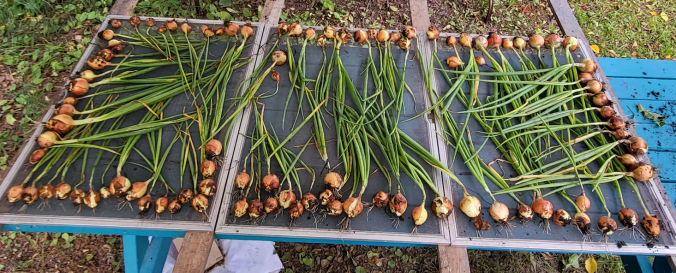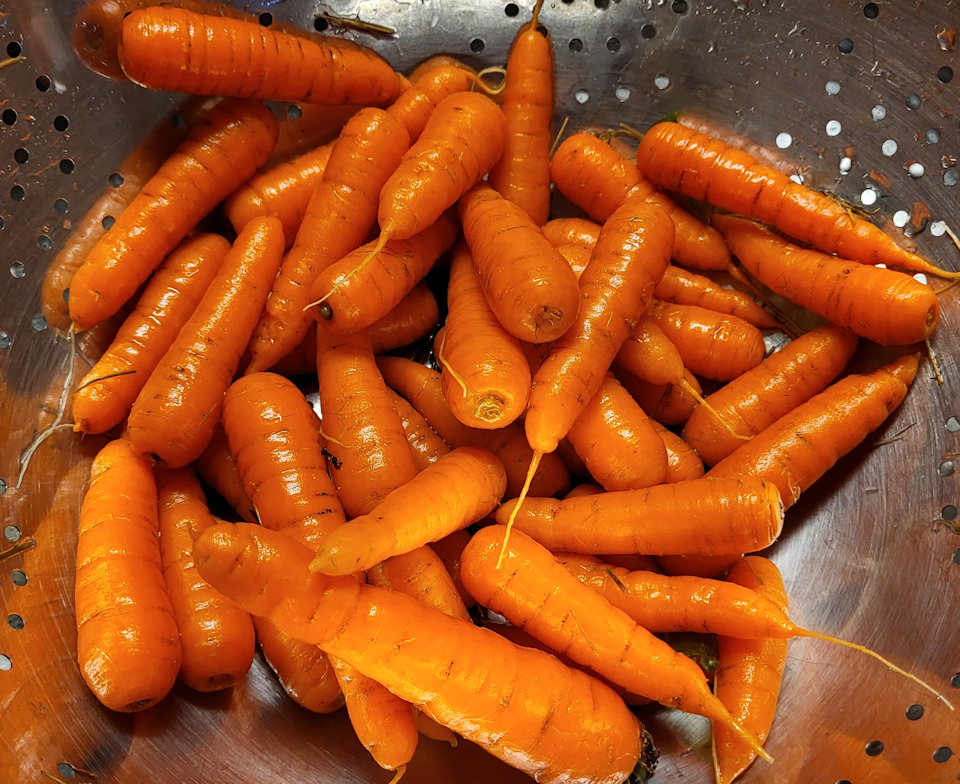When we moved here, we had set out a five year plan with goals for various areas. It was in year five that we expected to finally be ready to plant a garden, which would have been last year (counting our summers, since we moved in so late in the year). My daughters, however, were keen on getting things started. Prep was done in the old garden area starting in 2019, with our first garden planted in 2020, which you can read about here.
With our goal to eventually be able to grow and produce as much of our own food as possible, the gardens have been expending every year since.
Until this year.
This year, it was probably half the size of last year’s garden.
There are several reasons contributing to this.
The first were the far flung beds that were done as part of our food forest plan. With the exception of one newer bed where the Crespo squash were transplanted, this meant the squash/bean tunnel, the pea and bean trellises, and the corn and sunflower patches were not used for growing vegetables. In that area, we’ve progressed in our food forest plans, and will continue to plant more trees and bushes in that area as the budget allows.
Last year, we got three new large areas prepared, where we planted potatoes, melons, squash and corn.
All of which got flooded out.
We did have things to harvest in the old garden area, thanks to the raised beds we had. We already wanted to go to all raised beds because of how rocky and nutritionally poor our soil it. My mother was able to garden here because my dad had a tractor to plow the area with and spread manure from our herd of cows over it, plus she had 5 kids to help her pick rocks! That and my mother has two green thumbs. 😄 The soil condition was much better back then, but that was many years ago. Yes, there were still gardens grown here over the years, but they grew ever smaller, and eventually my parents stopped gardening and it was the younger of my brothers that grew a few things. It did also get plowed at times. I only know that because the last time it was plowed, some time before we moved in, it was done by the person that would become our vandal, and my sister thinks he had to have been drunk when he did it. We’re still dealing with the mess, and just trying to mow the area has been damaging our lawnmowers, no matter how careful we try to be.
After seeing where water collected the most during the flooding, the new areas we’d claimed last year were going to be converted to a series of raised beds joined by trellis tunnels. We were supposed to build the first ones in the fall of last year.
That didn’t happen.
Which I didn’t mind too much, since it gave me time to rethink how we wanted to build them.
So they were going to be built in the spring.
That didn’t happen, either.
These are going to be built mostly out of dead spruces we need to harvest out of the spruce grove, but felling these trees is not as simple as it sounds. With the help of my brother, we did eventually get some down (though one of them got stuck on other trees, and I still haven’t gotten it completely out yet), but it still took forever to finally process the trees. In the end, we only managed to get one low raised bed framed out. The high raised bed is four logs tall and 9 ft long. The new bed is two logs tall and 18 ft long. This series of beds – hopefully there will be six in total – will all be 18ft long, joined in pairs with trellis tunnels. The way we’re building them now, if we want to make them higher, that can be easily done.
In the end, the areas we’d reclaimed the year before, did not get used this year. They were just too overgrown and we won’t be able to do anything in those areas until the new raised beds are built.
Which meant we were using about as much garden space as we had maybe two or three years ago, instead of expanding as planned.
It was very frustrating for me. I’d bought so many seeds, in preparation for having a larger garden! Plus, we still had seeds from previous years to use.
I go through all of those in this video.
So here are some of the things we didn’t grow, mostly because we just didn’t have the space, but also the things that failed.
These are seeds we’d ordered from Veseys.

We planted pretty much everything in the paper envelopes in the above photo. The beets failed completely, but the rest did pretty well. In the beans, we had yellow and green bush beans that got planted in the high raised bed that did well, even after they got eaten by deer, but we had planned to grow varieties of poles beans, drying beans, and even some beans my mother gave me that go trace back to her own days of gardening here. The Red Swan beans were only planted late in the season, with the purple corn, for their nitrogen fixing properties, though we did get beans to harvest out of them.
We did plant the Dalvay peas, but not the Espresso corn. We have several varieties of short season sweet corn, but didn’t plant any of them at all. There was simply no space for them.

We did get more of these wildflower mixes. The areas we’d tried to grow them previously got flooded, so we wanted to try again in another area.

The bare earth in these photos is where we’d had branch piles that finally got chipped, making an already blank slate for us. My daughters prepared and planted the alternative lawn mix here.
If anything sprouted, they didn’t survive long enough to be identifiable.
The biggest problem turned out to be the cats. They love to roll around in bare earth, and even used the loosened soil as litter boxes.
We still have the Western Mix. I’m still wanting to plant those in the strip of flat, open land between our fence line and the ditch. Perhaps in the coming spring, I’ll be able to broadcast them. This is not an area we can prepare the soil. We just plan to keep broadcasting native wildflowers to attract pollinators, and whatever takes, takes, what doesn’t, doesn’t.
Then there were these seeds from Baker Creek.

Out of all these, we planted the corn and the tomatoes. That’s it.
With the sunflowers, we just didn’t have any prepared space for them. With the poppies, we’ve grown this variety before, so this year we tried the other variety I found. We hadn’t planned to grow lettuce this year at all, so those free seeds were set aside. The salsify was meant to be planted in deep containers. I did find a couple of old garbage cans we could have tried, but we never got around to cleaning them up, drilling drainage holes, and filling them with soil.
This next batch of seeds were from Heritage Harvest. I like this seed source in particular, because they grow their own seed, and their zone 3 location is even further North than we are! So when it comes to growing season, we can be sure anything we get from them should be able to grow here, too.

*sigh*
We had massive germination problems, and I don’t think the problem was the seed quality. I think there was something wrong with our seed starting set up.
The Red Wethersfield onions started out fine, but basically disappeared after they were transplanted. That same bed had the Roma tomatoes, which got blight, so that might be a soil health issue.
The salsify, like the seed from Baker Creek, never got the containers they needed ready in time.
With the Lemon Cucumber – a free gift – one did germinated. I transplanted it where we’d grown ground cherries last year, and it seemed to do okay for a while, until something killed it.
As mentioned previously, the Little Finger eggplants that did finally germinate did not do well, which I think was a location/sunlight problem. The chamomile did well, as did the Tom Thumb popcorn, though the kernels won’t pop for some reason I can’t quite be sure of. As for the rest…

These are just some of the winter squash and gourds we tried.
Nothing on the Red Warty Thing, Styrian and Kakai pumpkins, nor the Apple, Canteen and Yakteen gourds. Either no germination, or they germinated, then died. We had a couple of Lady Godiva’s and Boston Marrows that made it into the squash patch. Eventually, a couple of Ozark Nest Egg gourds germinated, and got transplanted near where the Lemon Cucumber went, but by then, it was so late in the season, we didn’t expect much out of them.
There was also the Cream of Saskatchewan watermelons from Heritage Harvest that had zero germination.
There were other things we intended to plant, but just never got done, because these area annuals that easily self seed, so we want to find a permanent location for them, and treat them as perennials. Along with the poppy seeds, we have strawberry spinach, plus a couple of varieties of dill. One variety is better for their leaves, and the other for their seed heads.
I’m sure I’m forgetting other things. There was so much!
Final thoughts on what didn’t happen
A lot of our issues came down to not having prepared garden space, and that’s a huge frustration for me. It’s one thing to not be able to add more, but to not be able to use spaces we used last year, too?
Building raised beds is becoming a greater necessity. The current low raised beds in the main garden area are not doing well, as time goes by, even though we’ve been amending the soil every year. Soil compaction is a major problem, I think. Those beds are all sort of temporary, anyhow, so the logs along their sides tend to roll away, and the crab grass grows under them easily. Little by little, we will be rebuilding them as mid-height and high raised bed. We need to keep some beds lower, for tall plants like climbing beans and peas, corn or tomatoes, but for the sake of our backs, we need high raised beds for things like bush beans, lettuces, and other plants that don’t get very tall.
Over time, our garden expansion will extend into the outer yard, too. The idea is to have the things that get harvested throughout the summer, closer to the house, while the things that get harvested at the end of the season can be further from the house. That will take a few more years, though. We need to get the stuff close to the house addressed, first!
We also need to rethink how we start our seeds. I’ve been using compostable pots that are designed to be planted right into the ground, but they aren’t breaking down as advertised. That was particularly noticeable in things that were potted up in them. We also used Jiffy Pellets for many of the melons, squash and gourds, and I think they were just too small for the bigger seeds.
The Red Solo cups have been working well, though. They’re just so much bigger, it becomes a space problem to have them all set up under the lights in our living room. Ideally, we’d have shelves set up in the new basement with grow lights, as there’s lots of room down there, but the cats would destroy everything. The old basement has the benefit of access to water, but it doesn’t have the space.
Just a few more reasons why a greenhouse is on our list of things we want to set up! We can get one of the inexpensive portable greenhouses but, in the long term, we will most likely go with a polytunnel, or maybe even a Polycrub. Those seem to be a UK only thing, but would be ideal for our high winds and climate. My older daughter is looking to save up for a small, permanent greenhouse but, unfortunately, she’s been paying for a lot of vet bills and stuff, instead. 😥
For now, we need to get more of those dead trees cut down to use as building material. With our winter being as mild as it has been so far, we might actually be able to get progress on that before spring. We still have some garden soil that we purchased two dump truck loads of left, though the thistles and other weeds have been taking it over, so the soil needed to be sifted every time we collect some. We’ll probably need to get another dump truck load in a year or so, with the expansion plans we have.
There is lots of work ahead of us, just to be able to maintain the garden space we have now!
The Re-Farmer



